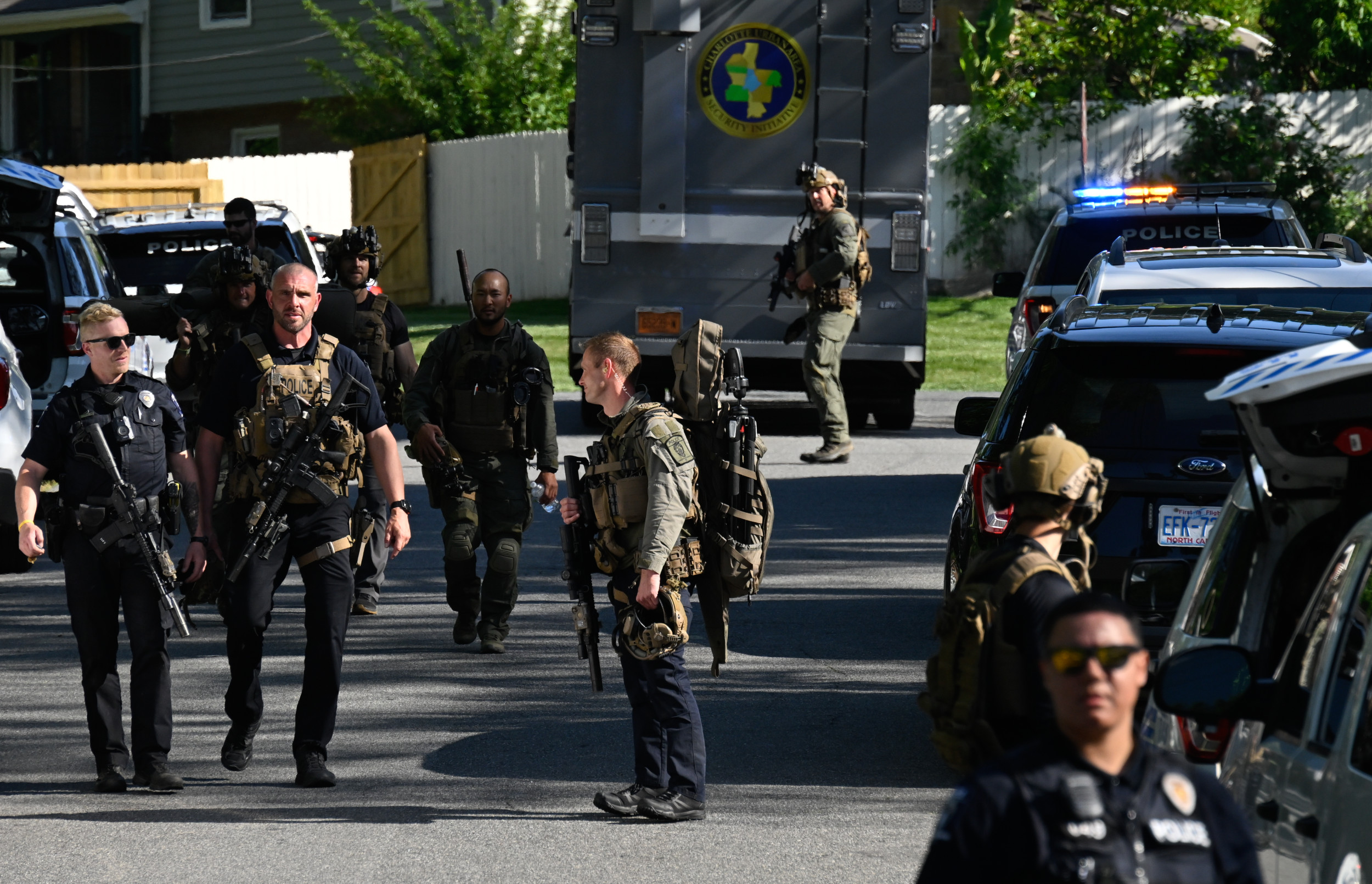Ukraine should wield its older tank fleet to plough through the territory Russia has meticulously mined to stem the advance of Kyiv's troops, Newsweek has been told, as Ukraine's slow but steady counteroffensive yields small, painstakingly won gains for the war-torn country.
"You aren't going to risk your best tanks breaking known minefields," Dan Rice told Newsweek. Rice is a former U.S. Army officer who previously advised Ukraine's top soldier, General Valery Zaluzhny.
As Kyiv's long-touted counteroffensive got underway in early June, Ukrainian commanders initially committed some of their newly-obtained Leopard tanks to the front lines as Ukraine's forces probed the Russian defenses carved across the east and south of the country.

The older, less sophisticated tanks like the Soviet-era T-64 are "more expendable," Rice said, adding that Leopard and Abrams tanks will be more effective for exploiting the initiative if Ukraine is able to break through heavily mined territory.
In the early days and weeks in June, Kyiv's fighters "tried using Leopards and got bogged down in the minefields the Russians had prepared as the part of their echeloned defense system," according to Marina Miron, a post-doctoral researcher in the department of war sudies at King's College London, U.K. "This was a bitter lesson for the Ukrainian forces," she told Newsweek.
At the start of 2023, almost a year into all-out war, Ukraine's armed forces had around 250 T-64BV and 50 T-64BM main battle tanks at its disposal, according to figures published by the International Institute for Strategic Studies.
Since then, arrivals of the German-made Leopard 1 and Leopard 2 and the U.K.'s Challenger 2 main battle tanks have swollen the mechanized battalions, ready to be used by freshly-trained Ukrainian forces.
Yet they are not unlimited resources. Along with a handful of Challenger 2 tanks—and the U.S.-supplied Abrams that are yet to arrive—Ukraine has dozens of Leopard 2s, with many of the earlier Leopard 1s expected to arrive in the country in the coming months.
A confirmed six Leopard 2A4s and nine of the newer 2A6s have been lost so far, according to Dutch open-source intelligence outlet, Oryx, but as this tally only counts visually-verified losses, the true number could be higher.
These tanks are at their most lethal when they can fire at Russian forces while traveling at high speed, Rice said. "I'd hold them in reserve until a breakthrough of a minefield or an 'envelopment,'" he added.
It is risky for Ukraine to use these Western-made tanks in Zaporizhzhia, the annexed southern Ukrainian region which has been site of fierce clashes. "Not just because of the mines, but also because the Russians would have no issues spotting them easily due to the geographic features of the terrain there," Miron argued.
But minefields have been more than just a thorn in the side of advancing Ukrainian forces throughout the summer season in the country. And Ukraine knew they would be—barely a month into the counteroffensive, Ukrainian President Volodymyr Zelensky said Kyiv had hoped to start peeling back Russian forces before Moscow could fortify their defenses.
"I wanted our counteroffensive to happen much earlier, because everyone understood that if the counteroffensive unfolds later, then a bigger part of our territory will be mined," Zelensky told CNN via a translator. "We give our enemy the time and possibility to place more mines and prepare their defensive lines."
Ukraine has already faced criticism for the pace of progress over the past two and a half months, and some see Ukraine's success this year as a test of how long Kyiv's international allies will back the war effort.
But now, Ukraine is the "most heavily mined country in the world," Ukraine's defense minister said earlier this month.
"Hundreds of kilometers of minefields, millions of explosive devices, in some parts of the front line up to five mines per square meter," Oleksii Reznikov told The Guardian a little over two months into the push. Newsweek could not verify the claims.
Ukraine has been creative with the drone technology flourishing so rapidly in the country, including unmanned aerial vehicles to detect mines, Miron said. But for the moment, despite these efforts, the heavy main battle tanks are better used in battles such as close to the decimated Donetsk city of Bakhmut, she argued.
Time may not be on Ukraine's side, Miron said. Ukraine's window of opportunity to use their new tanks in areas such as Zaporizhzhia is closing, she continued, as Ukraine's autumn rainy season looms for the attacking forces.
The autumnal conditions could catch the Leopards and Challengers in mud, Miron said, adding: "There are no breakthroughs through the Russian defenses in Zaporizhzhia, so it might be the smartest choice not to waste any equipment now."
Uncommon Knowledge
Newsweek is committed to challenging conventional wisdom and finding connections in the search for common ground.
Newsweek is committed to challenging conventional wisdom and finding connections in the search for common ground.
About the writer
Ellie Cook is a Newsweek security and defense reporter based in London, U.K. Her work focuses largely on the Russia-Ukraine ... Read more
To read how Newsweek uses AI as a newsroom tool, Click here.








